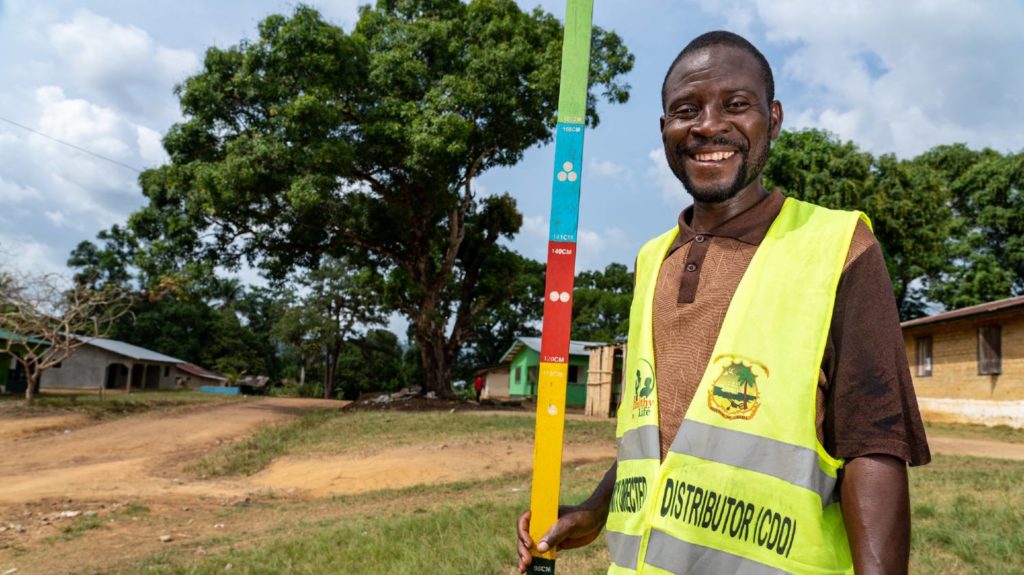The dose pole: a vital tool helping us to fight disease

These tall, colourful poles are used by community volunteers in the battle to eliminate neglected tropical diseases. But what are they, and how do they work?
Neglected tropical diseases such as trachoma and river blindness affect more than a billion people worldwide and can cause severe and lifelong impairment.
Sightsavers and partners have distributed more than one billion NTD treatments to protect people from these diseases and stop them spreading.
The treatments are delivered by volunteers from the local area, who travel from house to house to make sure all local residents receive medication. But without extensive medical training, how do the volunteers know what dosage to give to each patient?
That’s where the dose pole comes in.

Try our dose pole calculator
Find our how many tablets you’d need to take to protect you from river blindness.
Try the calculatorThe dose pole is a simple, light, universal device used to measure the height of men, women and children. The clear markings on the pole make it easy for people without high levels of literacy to calculate and record the correct dose for each patient, depending on how tall they are.
Each distributor is given their own dose pole. When delivering medication, they ask people to stand next to the pole so their height can be measured. The distributor then gives them the correct number of tablets, represented by dots on the pole.
Community volunteer Baraka Ango, from Kudaru in north-west Nigeria, says: “When the community see us with this stick, they will say: ‘Health worker, you are coming, we will come and collect our drugs.’ They are happy to see us with this stick. I love this stick because it represents us as volunteers in our community.”
By measuring a person’s height, rather than their weight, distributors don’t need to carry and constantly configure scales, which are more expensive and can be more difficult to read. The dose pole is often decorated in patterns, colours and markings unique to the community, and can be made from a variety of materials.

The distributors, who are nominated by their local community, are ideally placed to deliver the medication. Many have first-hand experience of how NTDs affect lives, having seen a family member or a neighbour infected. They understand the community’s dynamics and customs, which enables us to reach people who need our help the most, and ensures that vital drugs are distributed to people even in the poorest and most remote areas.
At a recent House of Lords debate, Lord Bates, minister of state at the Department for International Development, described how Sightsavers’ distributors use the dose pole and said: “That is a model of how things ought to continue.”
This community-focused approach means communities themselves are at the centre of efforts to combat NTDs, ensuring a long-term, sustainable solution.
Local distributors understand the community, which enables them to reach people who need our help the most.
